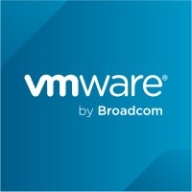


Cato SASE Cloud Platform and VMware VeloCloud SD-WAN compete in the network and security solutions category. Cato SASE Cloud Platform tends to be favored for its competitive pricing and customer service, while VMware VeloCloud SD-WAN is preferred for its robust feature set.
Features: Users value the comprehensive security and integrated networking capabilities of Cato SASE Cloud Platform. Notable features include advanced threat protection, secure access service edge, and SD-WAN. VMware VeloCloud SD-WAN is recognized for dynamic multipath optimization, deep visibility into network traffic, and seamless integration with existing infrastructure.
Room for Improvement: Cato SASE Cloud Platform users suggest better reporting capabilities, enhanced flexibility in deployment options, and improved analytics. VMware VeloCloud SD-WAN users seek simpler setup configurations, better performance analytics, and more intuitive user interfaces.
Ease of Deployment and Customer Service: Cato SASE Cloud Platform is appreciated for its straightforward deployment process and responsive customer service. VMware VeloCloud SD-WAN, although slightly more complex to deploy, offers detailed documentation and reliable support.
Pricing and ROI: Cato SASE Cloud Platform is frequently praised for its cost-effectiveness and satisfactory ROI. VMware VeloCloud SD-WAN, while more expensive, is deemed worth the price due to its extensive feature set and performance benefits. Buyers might find better value in Cato SASE Cloud Platform if pricing is a significant consideration, while VMware VeloCloud SD-WAN is justified for those prioritizing features and advanced capabilities.
Clients are now comfortable and not wasting productive hours on IT support.
The automation part is giving us a cost benefit and speed; we can react faster.
It's a very useful tool to mitigate and protect your enterprise.
The deployment time with VMware VeloCloud SD-WAN saves 50 percent compared to traditional MPLS networks.
The quick resolution of issues with Fortinet FortiGate is due to the support of the company and the fact that the equipment is easy to work with.
I would rate the technical support for Fortinet FortiGate a ten out of ten.
As a solution provider, when I encounter problems, I connect directly with Fortinet support, and they provide solutions within a very short time.
Their knowledge portal and Cato Academy portal are excellent resources.
Our customer service experience is excellent
They provide very good technical support.
I appreciate having dedicated service engineers who manage our account and ensure any technical issues are addressed efficiently.
They scale up really well from smaller models like the FortiGate 40 and 50 to bigger sites with the FortiGate 100 for more throughput - up to enterprise datacenters.
The variation comes in terms of the interfaces and throughputs, but from a security perspective, you get the same benefit, irrespective of whether you have an entry-level unit or an enterprise.
We determine sizing based on multiple factors: number of users, available links, traffic types, server count, services in use, and whether services will be published.
As an MSSP, we find it scalable for end users across EPP platforms, network, and cloud sides.
The customer base for VMware VeloCloud SD-WAN has been growing 30 to 40 percent per year when transitioning from traditional MPLS networks.
We're experiencing 99.999% availability consistently.
I would rate the stability of Fortinet FortiGate a ten out of ten.
Currently, we are experiencing a general outage of one of the main internet service providers of the Dominican Republic, and we have not been impacted in our operations because with SD-WAN, we have another internet service provider and we are working with the second WAN connection without any disruption.
I would rate the stability of the solution as ten on a scale of one to ten.
We have not seen many issues with Cato SASE Cloud Platform recently.
The technical team from VMware VeloCloud SD-WAN addresses these issues promptly, making us very happy with their support.
Overall, VMware VeloCloud SD-WAN is a stable solution.
When considering Sophos XG, which we also use, the logging and reporting functionality is notably more efficient.
These sessions should be around five to ten minutes long, allowing users and partners to quickly grasp the information without disrupting their daily tasks.
The solution should be able to implement machine learning and analytics of all the logs for threat detection and protection.
The platform lacks strong security features on the edge.
The kind of integrations they offer today, in the future, I would think they would add more and more feature sets, especially around where they remove the dependency of having specialist solutions on a typical monitoring side.
I would like to see improved security features, such as adding more SASE functions.
Unlike the comprehensive reports we receive from Palo Alto for our firewalls, VMware VeloCloud SD-WAN doesn't offer detailed reports that effectively convey the solution's benefits to management.
Last year, I renewed the support for three years, which can sometimes be expensive but depends on the security benefits and how it helps us.
It offers cost savings as it is generally cheaper than the competition.
It is about 20% cheaper.
The features are available for much less than Palo Alto.
The pricing is flexible due to our special partnership with Cato Networks.
The pricing is high, making the margin thin, which limits mark-up opportunities from the wholesale price.
The pricing involves licensing for the VeloCloud gateway based on the bandwidth used.
These features help reduce our downtime, manage the ISPs, and deploy SLAs for all the website traffic.
The most valuable feature of FortiGate is FortiView which provides proactive monitoring.
We got a firewall and gave an SSL VPN to my client to connect to their servers, after which, such kind of activities involving ransomware attacks stopped.
It is scalable for end users across network and cloud sides and saves operational costs.
They offer a very lightweight and powerful console where it has everything needed to manage as a service.
Its proprietary Dynamic Multipath Optimization (DMP) technology is regarded as the most powerful and valuable function by VMware VeloCloud SD-WAN.
Previously, organizations used MPLS links for 1 MB at around $200, but now they can use 4G or 5G SIM cards for half that price while achieving more bandwidth.
VMware VeloCloud SD-WAN has truly transformed our environment, providing significantly more bandwidth at lower costs, which is essential for tasks like Teams calls.
| Product | Market Share (%) |
|---|---|
| Fortinet FortiGate | 13.9% |
| VMware VeloCloud SD-WAN | 8.0% |
| Cato SASE Cloud Platform | 7.9% |
| Other | 70.2% |


| Company Size | Count |
|---|---|
| Small Business | 357 |
| Midsize Enterprise | 133 |
| Large Enterprise | 188 |
| Company Size | Count |
|---|---|
| Small Business | 14 |
| Midsize Enterprise | 7 |
| Large Enterprise | 10 |
| Company Size | Count |
|---|---|
| Small Business | 23 |
| Midsize Enterprise | 14 |
| Large Enterprise | 20 |
Fortinet FortiGate is a versatile network security tool offering features like VPN, firewall, web filtering, intrusion prevention, and scalability. It is known for its performance and integration with other Fortinet products, making it a preferred choice for robust cybersecurity.
Fortinet FortiGate stands out as a comprehensive cybersecurity solution with strong performance and ease of configuration. It delivers unified threat management, integrating features such as dynamic routing, SD-WAN support, and centralized management. Despite its strengths, improvements in the web interface's stability, pricing structures, and reporting capabilities are needed. Users seek better integration with third-party tools and automation advancements to enhance the experience further. These enhancements, alongside improvements in bandwidth management and the reduction of licensing costs, are points of interest for users looking to capitalize on FortiGate's extensive capabilities.
What are Fortinet FortiGate's key features?Fortinet FortiGate is widely implemented across industries as a primary firewall system for securing internet gateways and safeguarding data centers. It supports businesses in achieving SD-WAN integration and enhances cybersecurity by providing essential features like antivirus, web filtering, and application control. Enterprises utilize FortiGate for securing remote connections and ensuring compliance with security standards, making it adaptable for different network sizes and industries.
Cato Networks is a leading SASE (Secure Access Service Edge) platform, combining SD-WAN and network security to obtain a cloud-native service. Cato Networks optimizes and secures application access for users and identities. The platform delivers a next-generation secure networking architecture that minimizes legacy IT infrastructures’ complexity, costs, and risks. The goal of Cato Suite is to connect any user to any application securely and optimally.
Cato Suite runs on a private global network of more than 65 PoPs (points of presence) connected via SLA-backed network providers. The service can connect branches, data centers, users, and clouds. Cato can be deployed in stages to augment legacy network services.
Cato Suite delivers end-to-end route optimization for WAN and cloud traffic. The architecture is self-healing, enabling a high service uptime.
Cato Features
Cato Cloud has a global backbone to deliver a reliable, global network. Here are some key SD-WAN features of Cato Cloud.
What challenges does Cato Network solve?
MPLS (multi-protocol label switching) networks are usually expensive and limited in their capacity. Cato simplifies migrating to a faster, higher-capacity internet and SASE cloud. Cato SD-WAN appliances enable customers to improve usable capacity and resiliency.
Customers who suffer from the challenge of high latency and network inconsistency can use Cato to deliver a consistent connection and user experience to access on-premises and cloud applications.
Cato’s complete network security stack connects all branch locations to the Cato cloud, therefore protecting all traffic, both internet-bound and WAN, with enterprise-grade, cloud-based security services. This capability avoids having to backhaul internet traffic to a data center or hub or having to implement stand-alone cloud security solutions.
Organizations using Cato notice an acceleration of cloud traffic. Cato achieves this by routing all traffic from the edges to the PoP closest to the data center. Because of the close distance between the two, the latency is near zero.
Reviews from Real Users
An IT manager/project coordinator at a healthcare company says that “[Cato is] a cloud-based solution that integrates well with everything. They are the classic SaaS solution.”
Yeong-Gi L., a network engineer at Snetsystems, notes that “The solution is very stable. The scalability is quite good. Technical support was always helpful and responsive. The integration capabilities are not a problem at all.”
"The most valuable feature is that it also works as a next-gen firewall because it has security features," says Lorenzo S., senior solutions consultant Lead at MDI.
VMware Software-Defined Wide Area Network (SD-WAN) is a secure access service edge (SASE) platform that combines many types of software-based network technologies in an attempt to enable users to virtualize their wide area networks and reduce their reliance on hardware. In essence, this solution makes it possible for users to reliably access their applications from anywhere in the world by leveraging cloud technologies. Users can simply, efficiently, and completely control their network devices and traffic. It ensures that organizations are always able to use the best possible connection to their data centers. VMware SD-WAN steers traffic so that it is always using the most reliable connections and at the same time takes steps to remediate any problems that it detects in other network links. This guarantees that organizations can access high-priority applications at all times.
VMware SD-WAN Benefits
Some of the ways that organizations can benefit by deploying VMware SD-WAN include:
VMware SD-WAN Features
Reviews from Real Users
VMware SD-WAN is a solution that stands out when compared to many of its competitors. Two major advantages it offers are its ability to automate the process of creating and maintaining a virtual local area network and its intuitive user dashboard.
Sami I., principal cloud architect at Loihe, writes, “One of the solution's most valuable features is the VMware core automation stack at an SDDC. It includes NSX, the VMware virtualization layer for the networks (the LAN virtualization), which works extremely well with the VMware SD-WAN solution and is the primary advantage over all the others. None of the other vendors could integrate with the virtual LAN, making it quite complicated and virtualized to be fully automated.”
Chih S., senior technical consultant at a tech services company, says, “The product has a very good user dashboard that is simple to navigate.”
We monitor all Software Defined WAN (SD-WAN) Solutions reviews to prevent fraudulent reviews and keep review quality high. We do not post reviews by company employees or direct competitors. We validate each review for authenticity via cross-reference with LinkedIn, and personal follow-up with the reviewer when necessary.